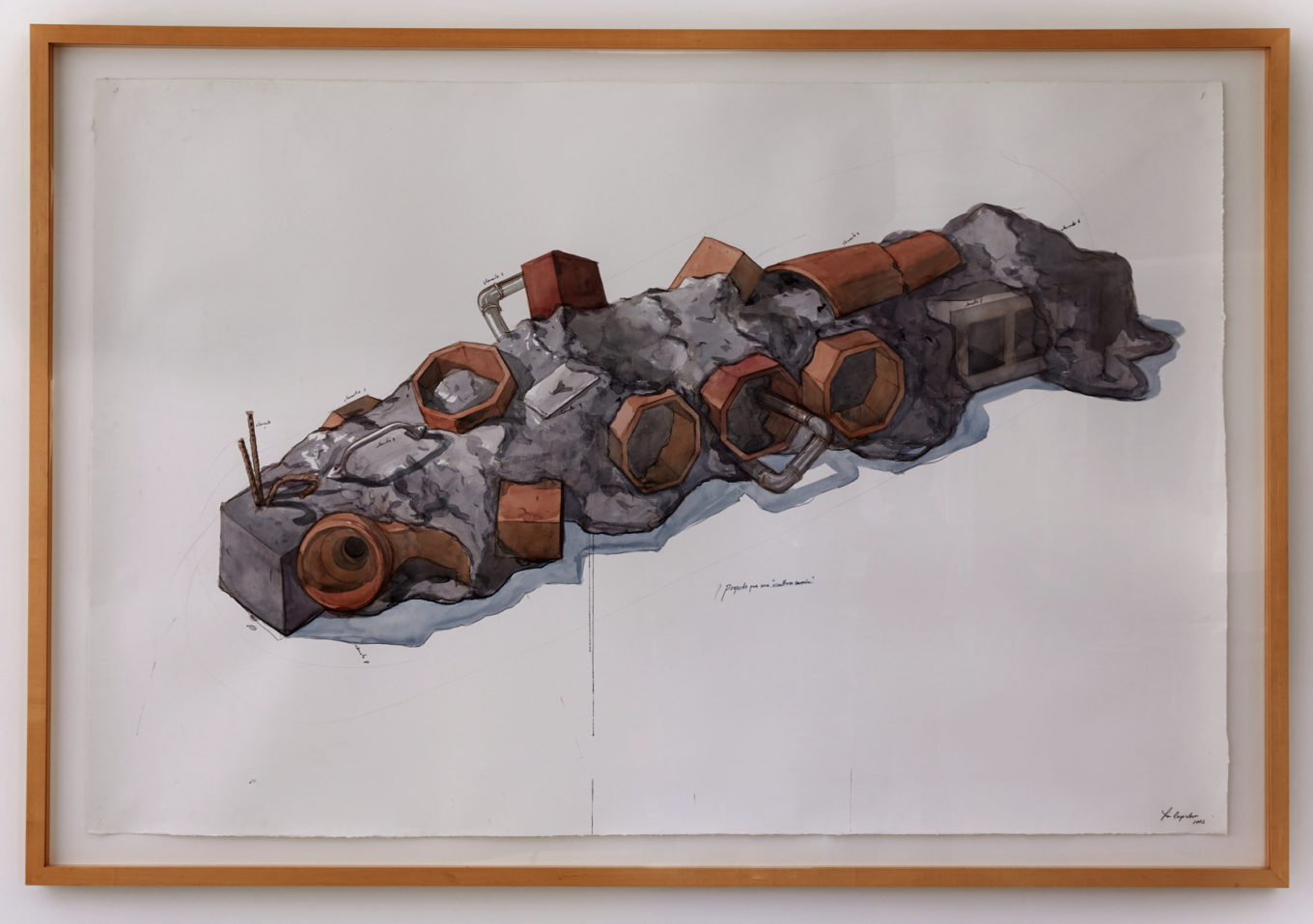Trish Clark Gallery is pleased to present An Architecture of Things, an evocative and satisfying mix of moving image, photography, and painting that comes with a sculptural edge, by noted international and New Zealand artists. The works all speak to perception and are united by each one’s mysterious sense of space, internal or external, that confounds ready apprehension. At times nostalgic for an imagined ‘other’ time, at times just downright strange, the whole represents a particular architecture of thought, action, words and images, with the corporeality of the objects reminding us of a framework for the hidden, the uncommonly noticed, in life.
Marie Shannon’s new video, The Rooms in the House, 2016, continues to mine her vein of deeply personal works illuminating the place that the spaces we inhabit hold in our internal cataloguing of our lives. Here, Shannon explores the illusion of the permanence of material space via the juxtaposition of the deceptive solidity of bricks and mortar with the frailty of memory.
Works from Jennifer French’s Dream City suite, 2004, deliver the disarming fluidity of French’s handling of time, intuition and the nature of perception. The grand scale of her blown up, blown out images of selected architectural entities become dream-like, strangely more emotion than physicality, somehow evoking a sense of shared recognition while being at once unknown yet nostalgic.
First exhibited in 1972 in London, Water Table by Anthony McCall evidences in early form the artist’s interest in temporal progression developed in his renowned ‘solid light’ sculptures. The compelling physicality by which McCall overturns normative understanding of ‘solid’ in his light pieces is here reversed, as a definitive set of solids appear to dematerialise over the course of McCall’s interventions, finally captured as a plane of immaterial light.
Oddly reminiscent of early constructivist paintings from a century ago, but thoroughly contemporary in their materiality, are Stephen Bambury’s new works, 2016-17. As ever, the artist explores and delivers fusion of deeply personal and emotional content with substantively researched materiality. Remarkable for the complexity and power packed into their relatively small scale, this ongoing body of new work will receive a fuller exposition in early 2018 at Trish Clark Gallery.
Kazu Nakagawa’s practice defies ready labelling, underpinned as it is by his fundamental philosophical positions, with his works emblematic of the Japanese concept of ‘ma’ – the space between, the distance between, the room between or around things. Born and trained in Tokyo, Nakagawa became a committed New Zealand island-dweller in 1988. His works here, to weigh the fall of words I, and to weigh the fall of words II, 2015-16, subtly traverse materiality, space, time and language.
Chris Corson-Scott’s 2016 extended exploration of New Zealand’s South Island yielded images remarkable for their unsettling juxtapositions of historic industry within the reclaiming natural world, the remnants of industrial behemoths on which the prosperity of New Zealand was formed. Now decayed and largely forgotten, but uncovered by diligent research and multi-day hikes lugging an 8 x 10 camera, the artist calls our attention to the past reality before it disappears entirely, and reminds us of our collective dependence upon and necessary care of the natural world. The full exhibition of this series will be presented in June 2017 for Auckland’s Festival of Photography.
Los Carpinteros (The Carpenters), the Havana-based collective responsible for some of the most important work to emerge from Latin America in the past decades, was formed in 1992 by Marco Castillo, Dagoberto Rodriguez and Alexandre Arrechea (who left the group in 2003). Collected by important Museums including MCA, Los Angeles; MoMA, New York; Guggenheim Museum, New York; TATE, London; and Museo Nacional Centro de Arte Reina Sofia, Madrid, the group’s political philosophy foregrounded the consequential traditions of artisans and skilled labourers that were everywhere being undermined, undercut and undervalued. The 2002 work here, its humble household building materials drolly monumentalised, dates to that early important period of three practitioners.

